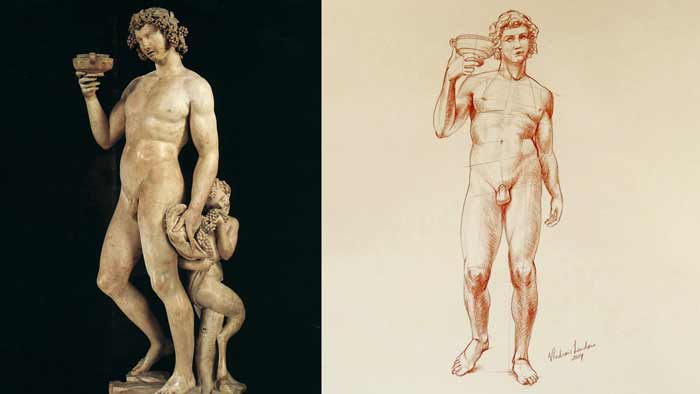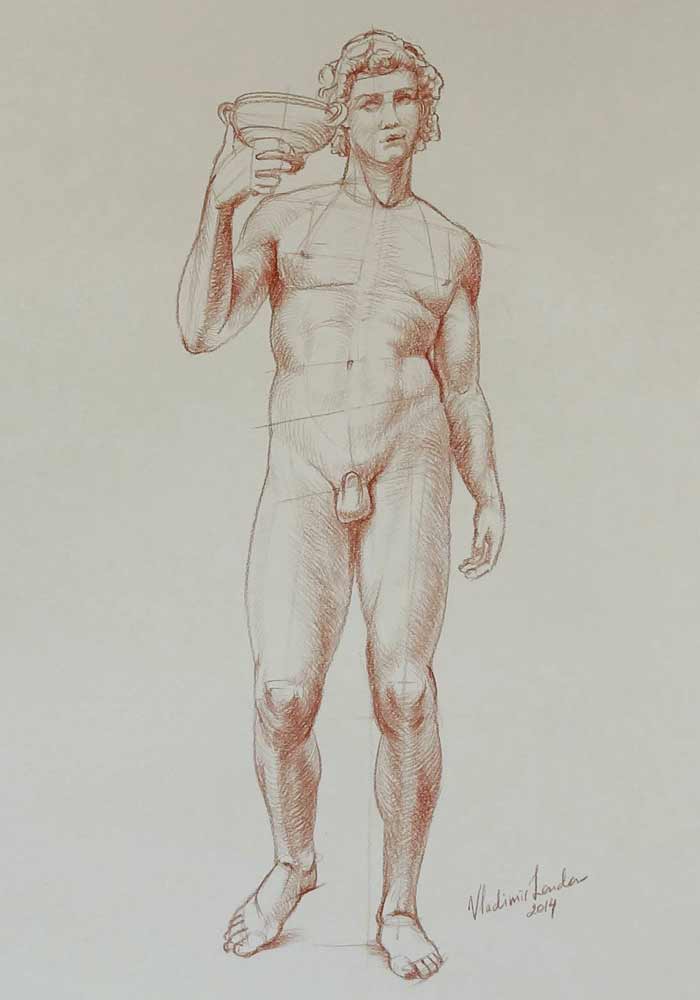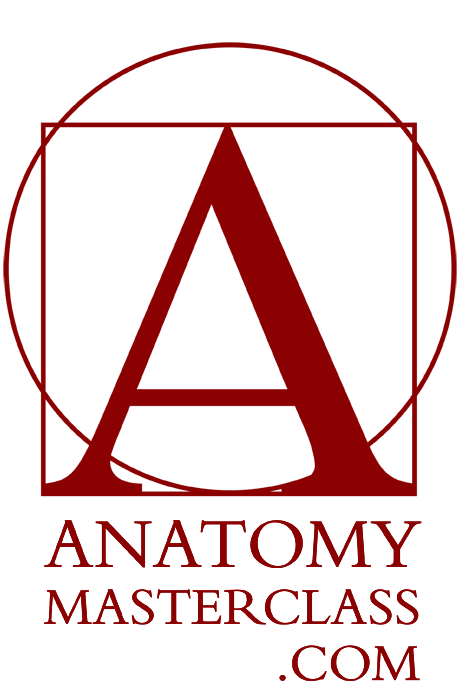How to Draw People
How to Draw People
Anatomy Lesson 22
In this video lesson, you will discover how to draw people.
How to Draw People
The model for our drawing will be the marble statue of Bacchus, the Roman God of wine. This sculpture was carved by one of the most talented sculptors and artists of the Renaissance, Michelangelo Buonarroti. He created it at the end of the fifteenth century, and it is now displayed in the National Museum of Bargello in Florence, Italy.
So, let’s see how to draw people step-by-step with the full knowledge of human anatomy.


I begin the figure drawing by marking the outermost edges of the figure, both top and bottom.
The vertical line between these two marks is the central line of the body.
Using the pencil as a measuring tool, I determine the center point of this line.
The top half is then divided in half, and each part is halved once again. As a result, we have divided the height of the figure into eight equal parts.
Wne considering how to draw people in contrapposto, remember that in such pose, the body weight is supported by one leg. That is why the axis of the pelvis will be tilted diagonally.
The pelvis has a ridged structure, so the axis of the pubic bone is always parallel to top edge of the pelvis.
Because the pelvis is tilted, the spinal column is curved.
The head fits in the top eighth of the figure’s height. To begin with, the head can be marked as an oval. This oval’s width is two-thirds of its height. This oval can be divided into two equal halves by a horizontal line. This line indicates the location of eyes.
The axis of Bacchus’ shoulders is tilted in the opposite direction of the pelvis. This is characteristic of the contrapposto position.
When it comes to the topic of how to draw people, you need to know certain proportions, bones and muscles. Some of them, I will mention here.
The line between the nipples is located one-fourth of the way down from the top. In male anatomy, nipples are located on that line, underneath the middle points of each collarbone.
The pit of the neck is in the center of the shoulders’ axis. This is where the two collarbones connect to the breastbone.
The first pair of ribs is indicated here with an oval. This oval coincides with the widths of the neck at its base.
The ribcage runs downwards from the first pair of ribs. Its widest point is at the eighth pair of ribs.
Two flank pads of the external oblique muscle are located on either side of the torso, below the ribcage and above the pelvis.
I will draw two ovals, one at the hip joint and another at the knee joint of the engaged leg.
The vertical axes of the upper and lower leg are marked by straight lines.
I will also draw a smaller oval at the ankle joint.
It is time to connect these three ovals with contours and outlines.
The outer outline of the upper edge is defined by the quadriceps muscle.
The outline of the top inner half of the upper leg is defined by the adductor group of muscles.
The outline of the lower inner half of the upper leg is following the direction of the tailor’s muscle.
The calf muscle and the anklebones define the contours of the lower leg.
The small triangular kneecap bone protects the front part of the knee joint. It is located just above the shinbone, the top edge of which is portrayed here as an oval.
When drawing the foot, make sure that the line of the heel points to the little toe.
Let’s come back to the upper body.
The trapezius and the deltoid muscles define the outline of the shoulders.
The biceps brachii muscle occupies the front portion of the upper arm.
The top half of the forearm has a characteristic curve caused by the extensors muscle group.
The fingertips of the hanging arm reach approximately the middle of the thigh.
The length of the hand, from the wrist line to the fingertips, is the same as the height of the face.
The face can be divided into three equal parts:
1. From the hairline to the eyebrow line;
2. From the eyebrow line to the base of the nose;
3. From the base of the nose to the bottom edge of the chin.
The Greek arch here indicates the place where the six-pack muscle inserts into the lower part of the ribcage.
In contrapposto position, you can see that one side of the torso is compressed, while the other one is stretched…
[ The full lesson is avaibale to Anatomy Master Class members ]
To learn more about how to draw people, enroll in the Anatomy Master Class
Simple Pricing, No Surprises
One-time payment - Only $97 USD
ENROLL NOW



